Do you know what sea lice look like? Have you ever heard of them? Small parasitic crustaceans called sea lice (also known as Sea louse), infest the skin of fish and can seriously affect fish populations, especially those of farmed salmon. In this article, we’ll examine the physical characteristics of sea beach lice and how they differ from other marine parasites.
But first, let’s clarify what sea lice are. The tiny, transparent sea lice live on the blood and mucus of the fish they attach to and are known as. With only a few millimeters in length, they are frequently hardly discernible to the unaided eye. Sea lice, despite their tiny size, can have a significant effect on fish populations, particularly on farmed salmon, which are particularly vulnerable to infestations. Because of this, it’s crucial to know how to spot sea lice and how to limit their influence on fish populations.
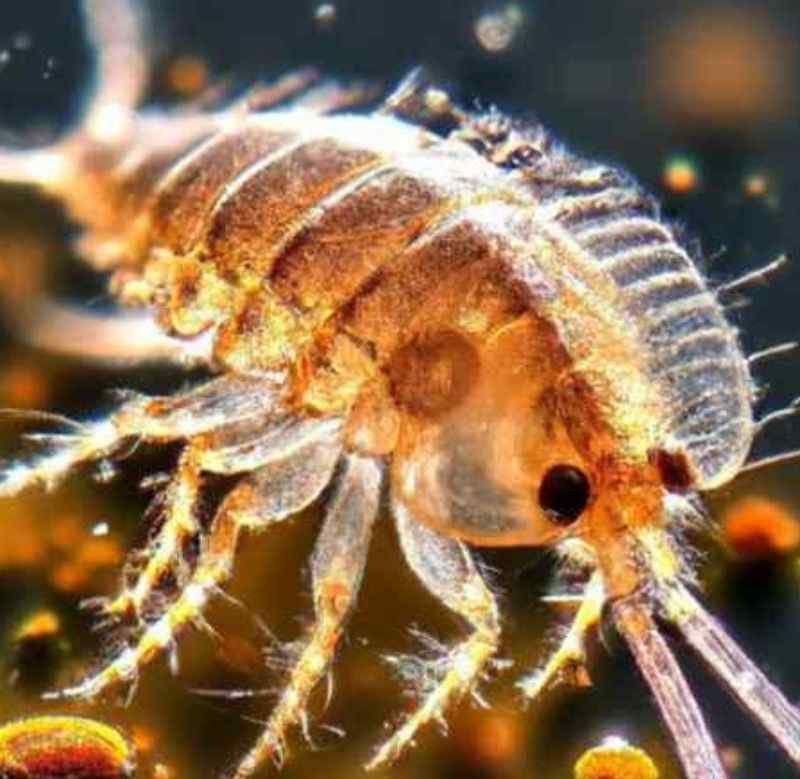
Related Article
What is Sea Lice? What Does Sea Lice Look Like?
What is a Sea Lice?
- Small parasitic crustaceans called sea lic to infest the skin of fish.
- They can seriously affect fish populations, especially those of farmed salmon.
What Does Sea Lice Look Like?
- Sea lice are tiny, translucent animals with oval, flattened bodies. They have numerous pairs of legs on the underside and two antennae on the head.
- Though certain species may be slightly reddish or brownish, the majority of species are clear or pale in appearance.
- Having a tough exoskeleton, Sea louse.
- Species with unusual patterns or long, slender antennae can be recognized.
- With only a few millimeters in length, they are frequently hardly detectable to the human eye.
How to Identify Sea Lice
- Because of their tiny size and transparent appearance, sea lice are frequently challenging to see.
- They are distinguishable by their antennae and flattened oval-shaped bodies.
- Some species can be identified by their unusual patterns or long, slender antennae.
- Due to the similarities in appearance among many species, it can be challenging to distinguish sea lice at the species level.
Sea Lice Life Cycle
Fish skin is home to parasitic creatures called sea lice. They go through a long life cycle with various developmental stages:
Egg Production
On fish skin, female sea lice lay their eggs. Typically, these eggs are fastened to the host fish’s fins or scales.
Larval Development
The larvae that emerge from the eggs are tiny and transparent. These larvae cling to the host fish’s skin and start consuming its blood and tissues.
Juvenile And Adult Stages
The larvae gradually molt into juvenile sea lice as they mature and expand. These young sea lice keep eating the host fish and develop into adults.
Reproduction
Lekking is the term for the process through which male and female adult sea lic assemble to mate. The cycle is restarted when the females deposit eggs, which develop into new larvae.
Pictures of Sea Lice
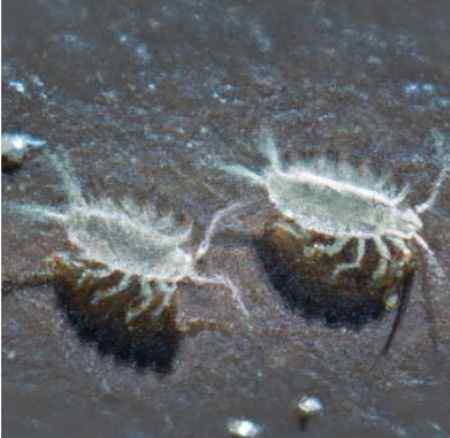
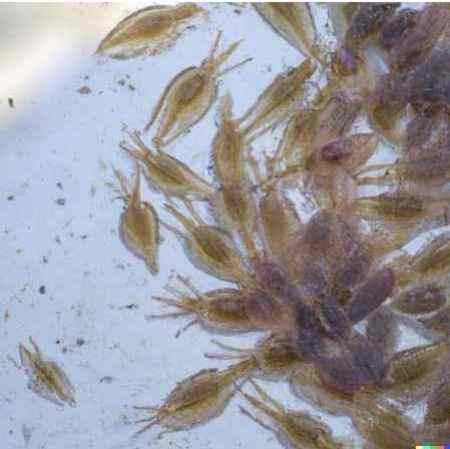
The Origin of Sea Lice
Where do sea lice come from? The parasites known as copepods, which infest the skin of a variety of marine creatures like fish, whales, and dolphins, are assumed to be the ancestors of sea lice. Although the precise evolution of sea lice is not fully known, it is thought that they have existed for millions of years.
All maritime areas around the world harbor sea lice, albeit some species, are more prevalent there than others. Since they are drawn to the higher concentration of host fish in places with high levels of water pollution, this is where they are most frequently found. Sea lice are frequently discovered in places with a lot of human activity, such as close to fishing ports and coastal villages. Overall, there is a wide range of maritime environments where sea lice can be found.
Impact of Sea Lice on Farmed Salmon Fish
Because sea lice are parasites that feed on their host fish’s blood and skin, they can have a severe negative influence on farmed salmon fish. Sea lice can seriously affect farmed salmon, resulting in decreased growth, lower survival rates, and greater susceptibility to other diseases, when they are present in large quantities. Sea lice can cause obvious harm to the skin and flesh of the fish, which can have an impact on the overall quality of farmed salmon. As a result, the salmon may become less desirable to buyers and lose market value.
Fish farmers frequently employ a range of management techniques to reduce the effect of sea lice on salmon raised in captivity. Both mechanical and chemical approaches, such as manual removal of the lice and the use of anti-parasitic medications to kill the lice, can be used. The use of natural predators, such as wrasse fish, to reduce sea lice populations on salmon farms has drawn more attention in recent years. Overall, several variables, including the local ecology and the particular species of sea lic involved, will affect how well these measures work to reduce sea lice on farmed salmon.
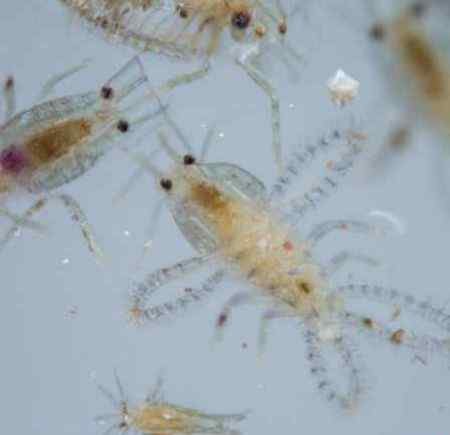
Sea Lice Frequently Ask Questions – (Sea Lice FAQs)
How long do sea beach lice stay in one area?
Since their travel habits can be influenced by several factors, including water temperature, food availability, and the presence of host fish, it is challenging to correctly anticipate how long sea lice will stay in one place.
What does sea lice feel like?
Since sea lice are parasites that can damage humans, it is not advised to contact them.
Where do sea lice come from?
The parasites known as copepods, which infest the skin of a variety of marine creatures like fish, whales, and dolphins, are assumed to be the ancestors of sea lice.
Where are sea lice found?
All maritime areas around the world harbor sea lice, albeit some species, are more prevalent there than others. Since they are drawn to the higher concentration of host fish in places with high levels of water pollution, this is where they are most frequently found. Sea lice are frequently discovered in places with a lot of human activity, such as close to fishing ports and coastal villages.
Are sea beach lice edible?
Since sea lice are parasites that can damage people, eating them is not advised.
Can sea lice live in freshwater?
The majority of sea lice species can only thrive in saltwater conditions and are therefore found there. A few species of sea lice may, however, endure in brackish water, which is a blend of freshwater and saltwater.
Can sea beach lice live out of water?
Sea lice are incapable of long-term survival outside of the water due to their adaptation to living there.
Can you eat sea lice?
Since sea lice are parasites that can damage people, eating them is not advised.
Can you get sea lice from the sand?
Given that these parasites are normally found on the skin of fish and other marine animals, it is unlikely that you might contract sea lice from the sand.
Can you see sea lice?
Small, parasitic crustaceans known as sea lice can be challenging to spot with the unaided eye. They might be challenging to see on the host fish’s skin because they are typically transparent.
How long can sea lice live out of water?
Sea lice are incapable of long-term survival outside of the water due to their adaptation to living there.
How to catch sea lic?
Since sea lice are parasites that can damage humans, it is not advised to try to catch them.
How to kill sea lice?
The use of pesticides, mechanical techniques, and natural predators are only a few ways to manage sea lice populations. Sea lice are frequently eliminated by fish producers using anti-parasitic medications in addition to physical techniques like cleaning the nets and removing the lice from the host fish. The use of natural predators, such as wrasse fish, to reduce sea lice populations on salmon farms has drawn more attention in recent years.
Is sea lice real?
Yes, fish and other marine species’ skins can get infected with sea beach lice.
What eats sea lice?
Other marine creatures like fish and birds are among the natural predators of sea lice. The use of natural predators, such as wrasse fish, to reduce sea lice levels on salmon farms has drawn more attention in recent years. Salmon farms frequently use certain fish species, like lumpfish and lumpsuckers, as “cleaner fish” to reduce sea lice numbers because they are known to feed on sea beach lice. Birds like gulls and terns that feed on the lice when they are present on the skin of host fish also prey on sea lice. Overall, sea lice are controlled in number and their effects on fish populations are minimized by their natural predators.
When is sea lice season?
Several variables, such as water temperature, the accessibility of food, and the existence of host fish, might affect the prevalence of sea lice. Sea lic are difficult to categorize into a particular “season,” as they might exist all year long in some regions. fishing harbors
When is sea lice season in Florida?
It is challenging to pinpoint a particular “season” for sea lice in any given region since, as was already said, the incidence of sea lice can fluctuate based on several circumstances. Sea lice may be around all year in Florida, though their numbers may change depending on the local environment.
Where is sea lice found?
All maritime areas around the world harbor sea lice, albeit some species, are more prevalent there than others. Since they are drawn to the higher concentration of host fish in places with high levels of water pollution, this is where they are most frequently found. Sea lice are frequently discovered in places with a lot of human activity, such as close to fishing ports and coastal villages.
Are sand fleas and sea lice the same thing?
No, sea lice and sand fleas are not the same. Small, leaping crustaceans known as “sand fleas” can attack people and are frequently found in beach sand. Small parasitic crustaceans called sea lice to infest the skin of fish and other aquatic creatures.
How long do sea beach lice live?
Depending on the particular species and the environment they live in, sea louse can have a wide range of life spans. While some sea lice species only live for a few weeks, others might live for several months.
What are sea lice attracted to?
Sea lice are frequently seen in locations with a lot of host fish because they are drawn to the skin of those species. Additionally, because these places typically have larger populations of host fish, they are drawn to areas with high levels of water pollution.
Are sand fleas the same as sea lice?
No, sea lice and sand fleas are not the same. Small, leaping crustaceans known as “sand fleas” can attack people and are frequently found in beach sand. Small parasitic crustaceans called sea beach lice to infest the skin of fish and other aquatic creatures.
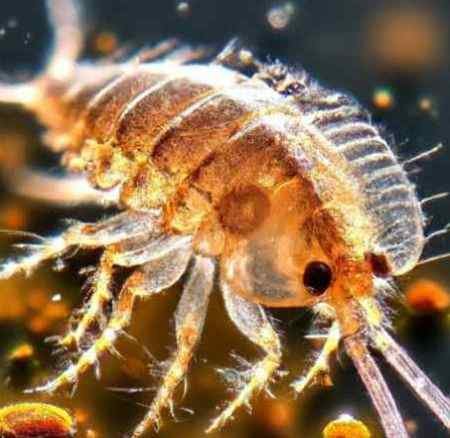
Conclusion: What Does Sea Lice Look Like, Life Cycle, And Origin.
In conclusion, sea lice are tiny parasitic crustaceans that live on fish skin and can seriously impair fish populations. They are believed to have developed from copepods and have a complicated life cycle with multiple developmental phases. To manage and reduce the impact of sea lice on fish populations, it is crucial to comprehend the sea lice biology and behavior. A critical step in this procedure is comprehending what sea lice are and how they appear. We can improve our methods for reducing their numbers and having less of an impact on fish populations by researching these parasites and knowing more about their biology.